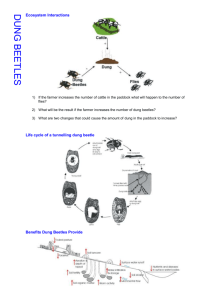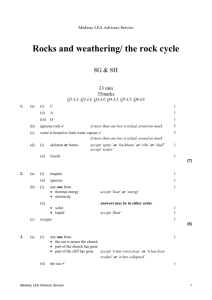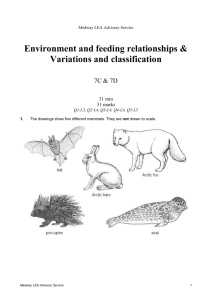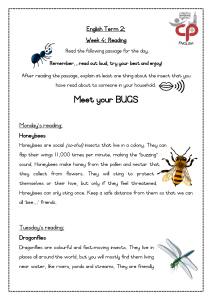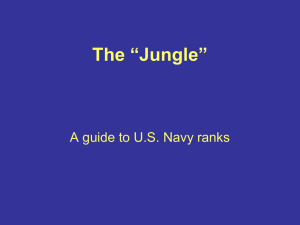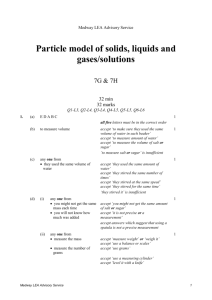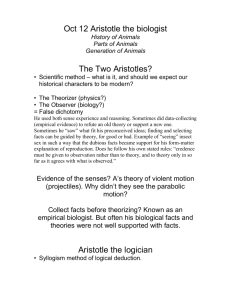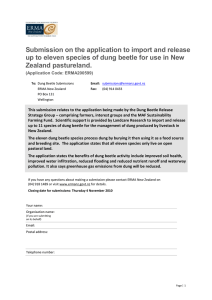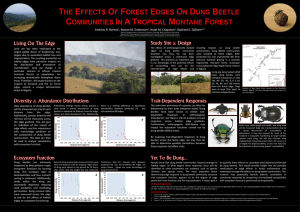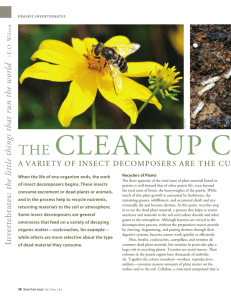Environment and feeding relationships/variations and classification
advertisement
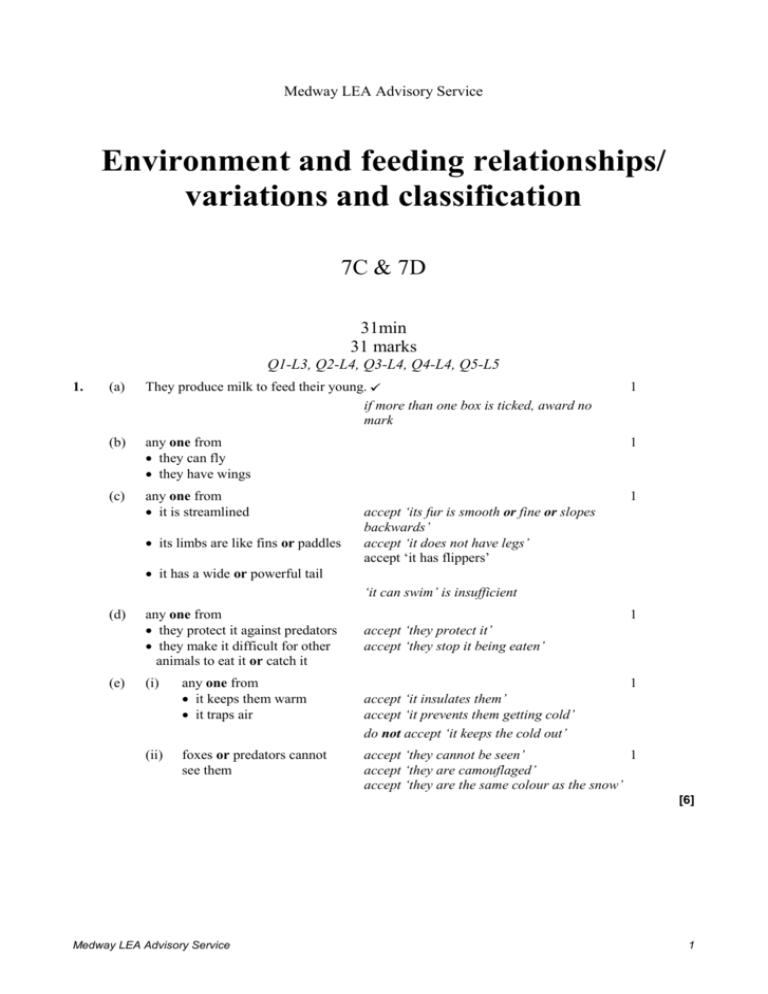
Medway LEA Advisory Service Environment and feeding relationships/ variations and classification 7C & 7D 31min 31 marks Q1-L3, Q2-L4, Q3-L4, Q4-L4, Q5-L5 1. (a) They produce milk to feed their young. if more than one box is ticked, award no mark 1 (b) any one from they can fly they have wings 1 (c) any one from it is streamlined its limbs are like fins or paddles it has a wide or powerful tail 1 accept ‘its fur is smooth or fine or slopes backwards’ accept ‘it does not have legs’ accept ‘it has flippers’ ‘it can swim’ is insufficient (d) (e) any one from they protect it against predators they make it difficult for other animals to eat it or catch it (i) (ii) any one from it keeps them warm it traps air foxes or predators cannot see them 1 accept ‘they protect it’ accept ‘they stop it being eaten’ 1 accept ‘it insulates them’ accept ‘it prevents them getting cold’ do not accept ‘it keeps the cold out’ accept ‘they cannot be seen’ 1 accept ‘they are camouflaged’ accept ‘they are the same colour as the snow’ [6] Medway LEA Advisory Service 1 2. (a) feature: strong muscles accept ‘muscles’ reason: to pull a sledge or to carry a load (b) feature: thick fur accept ‘fur’ reason: to keep them warm or to trap air accept ‘to insulate them’ do not accept ‘to keep the cold out’ features may be in either order each reason must correspond to the correct feature (i) variation. if more than one box is ticked, award no mark (ii) information passed from the mother in an egg. if more than one box is ticked, award no mark 1 1 1 1 [4] B 3. D (a) 3 C A if all four answers are correct, award three marks if two or three answers are correct, award two marks if one answer is correct, award one mark accept the names of insects instead of letters accept numbers written by the correct sectors (b) (c) (i) any one from plenty of dung or food cows produce dung 1 (ii) plenty of dung beetles or food accept ‘dung beetles will be there’ or ‘they eat dung beetles’ 1 (i) it will decrease 1 any one from change in climate or weather accept suitable examples of a change in climate increase or decrease in predators disease habitat or roosting sites destroyed accept ‘nesting sites destroyed’ accept ‘fewer places to live’ 1 Medway LEA Advisory Service 2 increase in food supply insecticides not used anymore insects become resistant to insecticides accept ‘fewer cows’ or ‘less food for insects’ or ‘less dung’ accept ‘concentration of insecticide in the food chain’ do not accept ‘they could die’ [7] 4. (a) (b) A: insects 1 B: amphibians 1 C: molluscs 1 D: reptiles 1 A 1 C answers may be in either order accept ‘fly’ or ‘insect’ accept ‘snail’ or ‘mollusc’ 1 [6] 5. (a) any two from they live in or close to their food accept ‘food is available’ they are not washed away protection accept ‘they cannot be seen’ 2 (b) (i) 1 any one from there are fewer eggs accept ‘herring lay fewer eggs’ do not accept ‘they cannot lay eggs’ fewer herring eggs hatch herring eggs are removed accept ‘they have fewer places to lay their eggs’ cod have fewer herring to eat or less food 1 do not accept ‘they have no herring to eat’ (ii) the habitat of sandeels is reduced or destroyed or removed accept ‘sandeels have nowhere to live’ puffins have fewer sandeels to eat accept ‘there are fewer sandeels’ accept ‘sandeels are removed’ 1 1 [6] Medway LEA Advisory Service 3
